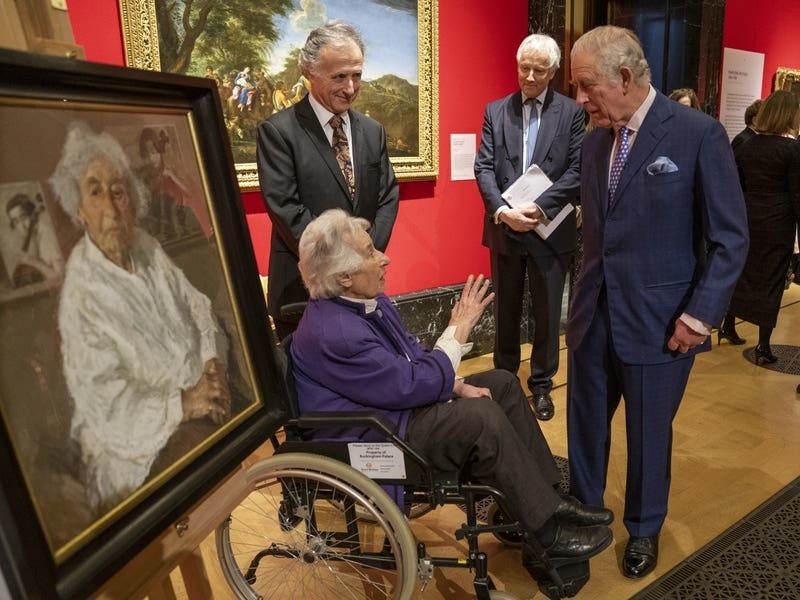The Prince of Wales has hailed seven portraits of some of the nation’s last remaining Holocaust survivors as a “powerful testament” to their lived experience.
Charles commissioned the paintings of the elderly men and women to stand as a lasting reminder of the horrors of the Nazi regime, and was left moved after meeting one sitter who showed the prince her concentration camp tattoo.
Auschwitz survivor Lily Ebert, 98, whose picture was unveiled with six others at the Queen’s Gallery in London, also showed the heir to the throne a golden pendant she hid from camp guards in her shoe then later in her daily bread ration.
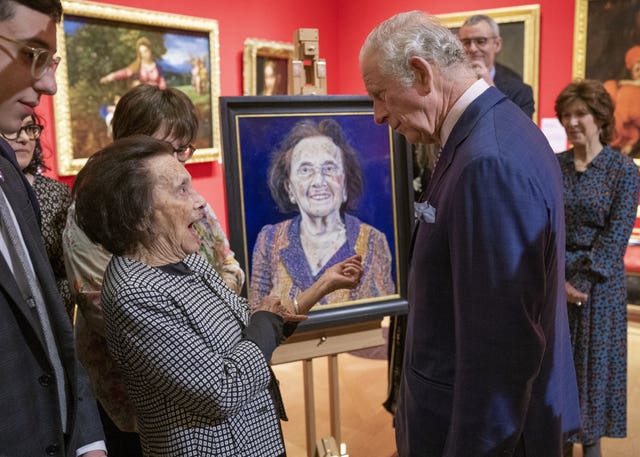
In the foreword for a catalogue accompanying the exhibition, Charles wrote we are all “responsible for one another, for our collective history”.
He added: “One of the starkest reminders of this was the Holocaust, when a third of Europe’s Jews were brutally murdered by the Nazi regime as it sought to extinguish not just the Jewish people, but Judaism.
“Seven portraits. Seven faces. Each a survivor of the horrors of those years, who sought refuge and a home in Britain after the war, becoming an integral part of the fabric of our nation.
“However, these portraits represent something far greater than seven remarkable individuals. They stand as a living memorial to the six million innocent men, women, and children whose stories will never be told, whose portraits will never be painted.”
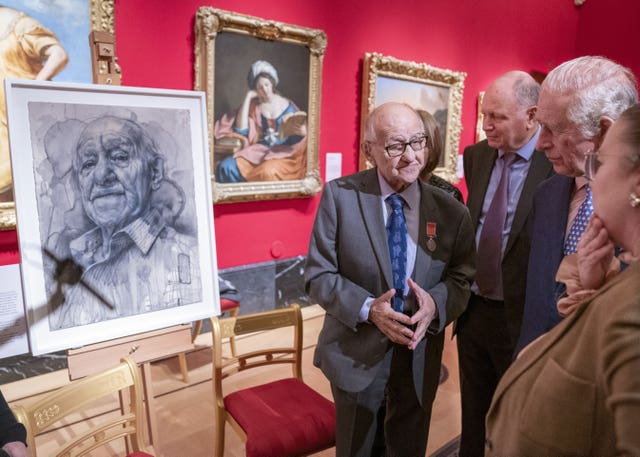
The 98-year-old Mrs Ebert showed the future king her pendant and rolled up the sleeve of her jacket to reveal the tattoo on her left forearm A-10572 – A for Auschwitz, 10 her block number and 572 her prisoner number.
In July 1944, a 20-year-old Mrs Ebert and her family – mother and five siblings – were transported to Auschwitz. Her parent and some of her siblings were condemned to death in the gas chamber after encountering the infamous Josef Mengele, notorious for his experiments on those in the camp, while the remaining family members were put to work.
Speaking about her pendant in the shape of angel she said: “This necklace is very special. It went through Auschwitz and survived with me. Auschwitz took everything, even the golden teeth they took off people. But this survived.
“I put it in the heel of my shoe but the heel wore out so … I put it every day in the piece of bread that we got to eat. So that is the story of it. I was five years old when I got it from my mother for my birthday.
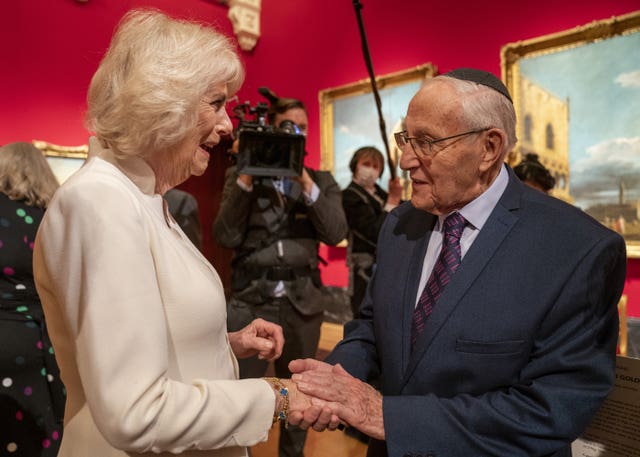
“They arrived and they saw Dr Mengele, he took them straight away. I have worn my necklace every day since I survived.”
Later her great-grandson, Dov Forman, who has written a book with Mrs Ebert about her experience, Lily’s Promise: How I Survived Auschwitz And Found The Strength to Live, said of the encounter with Charles: “The prince was very, very moved.”
Among the seven survivors whose portraits are hung in the gallery is Helen Aronson who, with her mother and brother, was among a group of around 750 people liberated from a Nazi-run ghetto in Poland out of 250,000 people sent there. The family had been separated from her father who had been murdered by the Nazis.
Today she shares her experiences with groups across the country, and she said about her painting: “The portrait was just excellent, absolutely true to life. It has been such an experience.
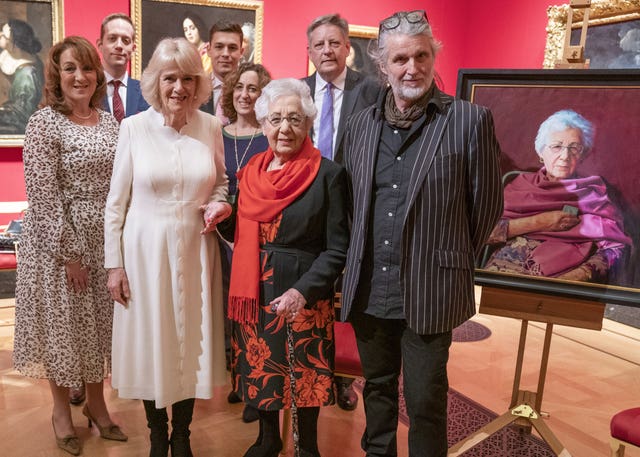
“It has been a very special and unforgettable day.”
Charles, who is patron of the Holocaust Memorial Day Trust, also commissioned portraits of Manfred Goldberg, Arek Hersh, Anita Lasker Wallfisch, Rachel Levy and Zigi Shipper.
The prince called on the talents of seven acclaimed artists involved to take part in the year-long project: Paul Benney, Ishbel Myerscough, Clara Drummond, Massimiliano Pironti, Peter Kuhfeld, Stuart Pearson Wright and Jenny Saville.
The project is the subject of a 60-minute BBC Two documentary, Survivors: Portraits of the Holocaust, which will be screened on January 27 – Holocaust Memorial Day.

